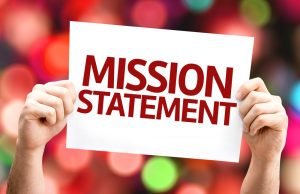Preliminary Steps for Writing a Personal Mission Statement
Who are you as a person? What are your goals in life? Being able to articulate something about yourself is an important way to create focus in your life and to set up a path to push forward into the future.
Creating a personal mission statement is one way to help guide yourself toward bigger and better things in life. In the business world, most major corporations and a number of small businesses use mission statements to crystalize their values and communicate their goals. As an individual, you, too, can develop a mission statement that you can use to help make decisions and provide a guiding focus as you move forward into your future. A personal mission statement differs a bit from a corporate mission statement, but in both cases, it allows you to crystallize what is important to you.
Here are a few preliminary steps to help you as you develop your own personal mission statement. Before you start writing, consider this:
- Identify your biggest successes. Reflect on the biggest successes that you have had over the years. Think about what made these situations successful, and look to see what sort of common themes emerge. Keep a list of these themes and use them to help you identify the conditions that lead you to success.
- Identify your key values. Write down all of the values that you hold. What is important to you? What do you believe in? Try to organize these into a list of 5-6 core values that define who you are as a person. Identify the single most important value. This will help you create a point of reference to guide your decision-making.
- Identify the difference you can make. How can you change the world? Your family? Yourself? Create a list of the ways you can make a difference at different levels of society, from your family up to the entire world.
- Identify your goals. Using what you have identified in the first three steps, try to develop short, medium, and long-term goals for specific things you hope to accomplish. Where do you see yourself next year, in five years, in ten years?

Finally, it can also be helpful to read some other people’s mission statements to get a feel for how they are written, the kinds of things people set as their goals, and how they plan to achieve them. While copying directly isn’t likely to help, since every person is different, this can inspire you to make your own mission statement more personal and useful.
Once you have done this preparatory work, you’ll be in a strong position to begin writing your mission statement. Take the material you’ve developed in the exercises above and boil it down into a paragraph or two that summarizes who you are as a person and what you want to achieve.
That said, there are some pitfalls in the development of a mission statement that you need to remain aware of as you develop your mission statement. Most importantly, there is a temptation to idealize yourself and to describe how you would like other people to perceive you rather than how you actually are. However, an honest mission statement is more valuable than one that projects an unrealistic image. One way to guard against this is to have a friend or family member review your mission statement and offer honest feedback about the value of what is written there. Choose someone who can tell you the unvarnished truth, and not just what you want to hear.
Another pitfall is assuming that your mission statement becomes a kind of scripture that is fixed for all time. Instead, a mission statement should grow and change with you. Remember to review your mission statement every year to update it and adjust to your changing job and living conditions.
